Health Effects of Mold: Risks & Symptoms
When we’re faced with mold in our home or business, we often can’t breathe easy until professional removal services eliminate it – literally! There are serious health consequences to the presence and spread of mold spores. Our bodies can react to them in a variety of negative ways, so it’s better to be prepared in advance. It’s time to familiarize yourself with the many adverse health effects and symptoms mold can cause.
Mold growing in your home can cost you a great deal of time, effort and money. In addition, exposure to mold can negatively affect your health.
Concerned About Mold’s Impact on Your Health? Get a Free Inspection!
Mold exposure can cause serious health problems, from allergic reactions to respiratory issues. Don’t wait to address potential mold in your home! Contact Mold Busters for a free virtual mold inspection. Our experts will provide a comprehensive assessment and a plan to eliminate mold, ensuring your home is safe. Act now to protect your health!
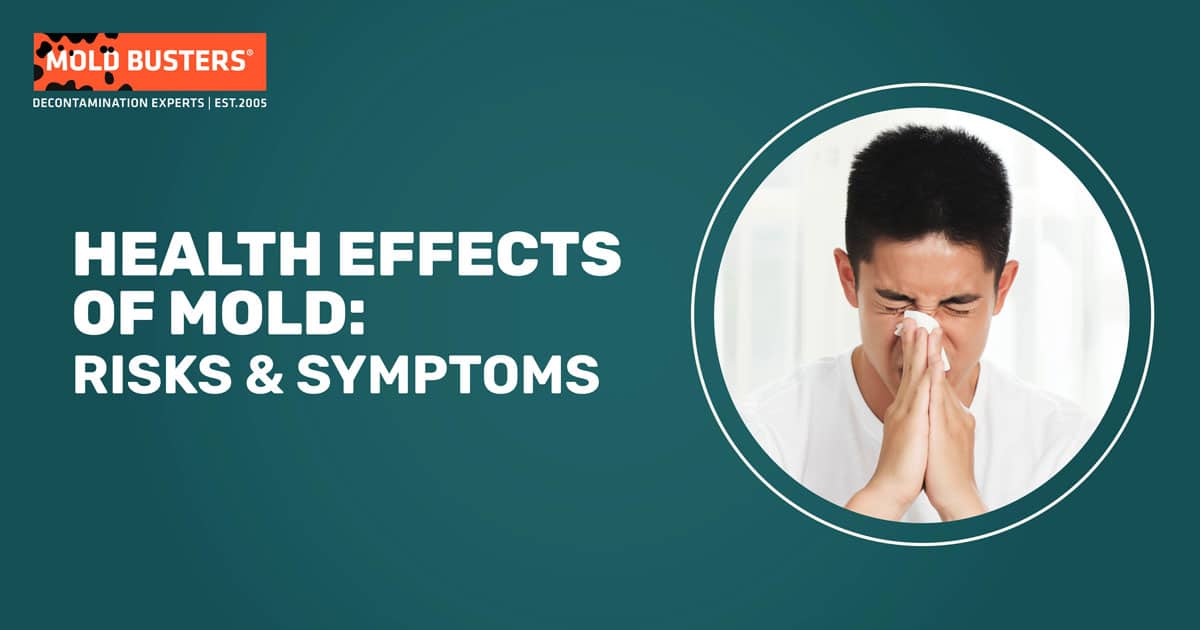
There are three ways your body could react to mold exposure:
- Allergenic response
- Pathogenic response
- Toxigenic response
How you react depends on several factors, including the amount of mold you’re exposed to, the species of mold and your own personal level of health and sensitivity.
Everyone will have a different reaction. However, all reactions, regardless of severity, require immediate attention and action.
If you think you’re suffering health effects of mold, contact a certified inspector to inspect your home for mold. The sooner you do, the closer you will be to finding relief.
For more details about possible mold health effects, please check the topics we cover in this article:
Contents
What are allergenic reactions to mold?
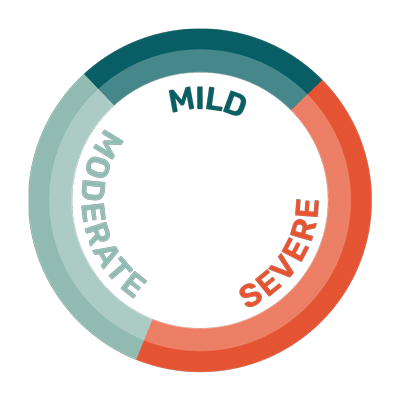
Most molds are allergenic. But while many people can handle a little bit of mold exposure, others are born sensitive and will experience allergic reactions. Allergic reactions, ranging from mild to severe, are the most common symptoms associated with mold exposure.
- Mild: congestion, rash, and itchy or watery eyes
- Moderate: itchiness and difficulty breathing
- Severe: swelling, difficulty breathing and swallowing, abdominal pain, cramps, vomiting, diarrhea, dizziness and mental confusion
What are pathogenic reactions to mold?

Pathogenic reactions to mold exposure are divided into three categories:
- Superficial: Superficial reactions are the most common pathogenic reactions to mold and include skin infections, nail infections and athlete’s foot.
- Subcutaneous: When you experience a subcutaneous pathogenic reaction, more serious than superficial, an infection develops underneath the skin.
- Systemic: Systemic reactions are the most severe of the pathogenic reactions and can be life threatening. The mold attacks the kidneys, lungs, liver or other organs.
What are toxigenic reactions to mold?
A toxigenic mold produces toxins. There are approximately 20 common toxins that mold is known to produce.

When you ingest or inhale these toxins, your chance of becoming ill increases. Upon exposure to toxigenic mold, you may experience the following effects:
- Mucous membrane irritation
- Skin rash
- Fever
- Nausea
- Fatigue
- Suppressed or weakened immune system
- Acute/chronic liver damage
- Acute/chronic central nervous system disorders
- Hormone disorders
- Cancer
Another serious condition associated with mold exposure is hypersensitive pneumonitis. This is an acute, or chronic, lung disease brought on by inhaling fungal antigens.
| Type of Mold | Health Risk | Prevention Tips |
|---|---|---|
| Black Mold | Respiratory issues, allergic reactions | Fix leaks, control humidity, remove black mold promptly |
| Aspergillus | Lung infections, allergic responses | Ensure good ventilation, clean air ducts, avoid dampness |
| Penicillium | Allergic reactions, asthma | Reduce indoor moisture, clean regularly, fix water damage |
| Cladosporium | Skin irritation, lung infections | Use dehumidifiers, keep surfaces dry, address visible mold |
How do you become exposed to mold?
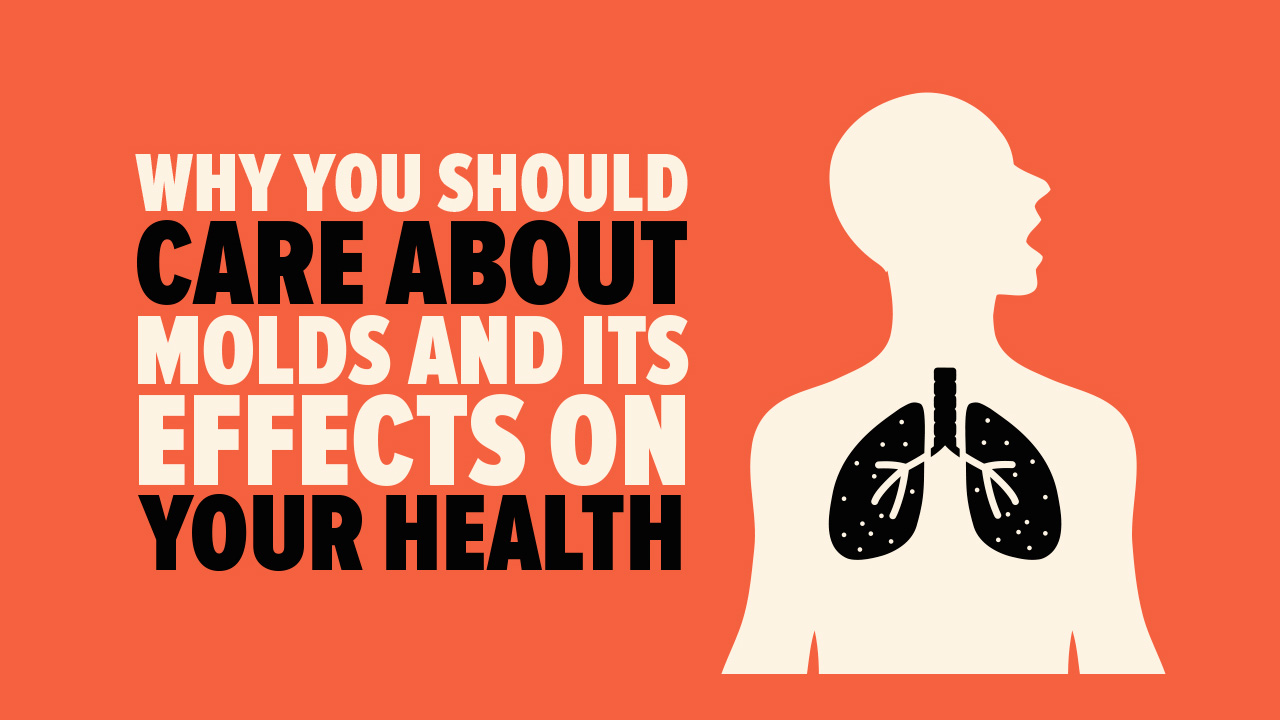
We come into contact with mold in primarily three ways: inhaling, touching, and ingesting mold.
Because mold spores are so small, they easily make their way into our lungs, where they may trigger anything from a mild allergic reaction to a serious respiratory condition.
Who is most at risk of mold exposure?
We come into contact with mold in three primary ways: inhalation, physical contact or ingestion. But every reaction to mold is different, as no two immune systems are the same.
Some people are more sensitive to mold than others. Both your genetic makeup and your current state of health are factors that will influence your reaction.
The following groups of people are especially susceptible to the adverse health effects of mold exposure, because their bodies may be weak to begin with:
- Infants and small children
- The elderly
- Asthmatics
- People with compromised immune systems
If you’ve been experiencing some of these symptoms and are concerned, call Mold Busters to schedule a mold inspection.
Who’s at greater risk of mold exposure?
Some people are more sensitive to mold, whether this is because of their genetic makeup or the current state of their health. Individuals with already-compromised immune systems; infants and small children; the elderly; and asthmatics are especially susceptible to the adverse health effects of mold exposure.
Remember that reactions to mold are uniquely individual, since no two immune systems are alike.
How does mold impact our health?
As mentioned above, some types of mold (the toxic type, to be precise) produce mycotoxins – nasty little spores that cannot be seen without a special equipment. For example, one often found toxic type of mold is the infamous black mold.
In most cases, mold spores will weaken your immune system enough that you become vulnerable to many diseases. How much of a harmful effect mold will have on your health will mainly depend on the time spend in mold presence. The longer you live inside a moldy house and breathe in mold spores, the greater the risk for you and, of course, your loved ones.
Ensuring that your home stays mold free is one of the best ways to prevent diseases and infections such as tuberculosis.
Is mold linked to asthma in children?
The dangers associated with mold exposure and inhaling mold spores have been common knowledge to the public for many years now. Mold releases toxic spores that are damaging to human health when inhaled for a prolonged period of time. For example, they can contribute to or worsen asthma symptoms.
There are thousands of different species of mold, and some are more harmful than others. The most harmful strand of mold is Stachybotrys chartarum, also known as black mold. Some of the most common symptoms of black mold exposure are shortness of breath, sneezing, coughing, skin irritation, red or itchy eyes, wheezing and respiratory complications and infections (in more severe cases).

Did you know?
Stachybotrys is the 3rd common toxic mold type found in homes we tested?! Find out more exciting mold stats and facts inside our mold statistics page.
Recently, a study confirmed a link between mold and childhood onset of asthma. A strong link between mold exposure and asthma in children is a significant cause for concern. Having your home inspected for mold by a professional can determine whether or not it’s hiding and reduce the chance of future outbreaks. Many times, homeowners are not even aware of existing mold problems in their homes because mold can hide behind walls and ceilings, underneath carpets and in other places that are difficult to reach.
A mold outbreak in the lower levels of your home, such as in your basement, can negatively impact your health. Mold spores linger in the air and can travel throughout your entire home in ventilation systems and air vents, putting you and your family at risk. A professional mold inspection will provide an assessment of your home’s indoor air quality, letting you know about potential threats and problems and reducing the chance of future mold outbreaks.
Create a healthy and safe environment for you and your family by helping reduce the chance of black mold growth.
How to cure mold related asthma symptoms?
If you’ve ever experienced the effects of the persistent and hazardous micro-organism called mold, then you already know how unpleasant and debilitating these effects can be.
The very first step in doing away with your symptoms is to find the source of the mold growth and the have it removed.
In most cases, mold problems can be traced back to some sort of moisture problem since water is the leading factor contributing to fungal growth. So, begin with detecting the problematic areas in your home. These areas most often include the kitchen sink, leaking toilets, condensation around windows and cracks in the foundation. Also keep an eye on areas that are poorly insulation and more humid.
In some cases, areas that are contaminated with mold are easily identified – they’re unsightly, attract dust and release unpleasant odours. Once you’ve identified them, the next step is fixing them in an efficient manner.
Unless you are lucky enough to possess specialized equipment and knowledge of proper mold remediation procedures, your best option is calling a team of mold removal experts. Not only are they well equipped with all the latest equipment, but they also have years of first-hand experience dealing with all types of mold problems. They’ll be able to pinpoint with certainty the source of the mold contamination and plan for a strategic remediation. Also, they’ll ultimately be able to minimize your risk of future mold growth.
Another advantage of hiring mold cleaning professionals is that they’re able to get the job done, without compromising your health and comfort. They implement safety and containment procedures throughout the entire duration of the mold remediation so that no one in the house is exposed to mold spores floating about in the air.
Once the mold removal project is complete, the experts will let you know what steps you can take to maintain a healthy and mold-free home. They may suggest you look into installing a proper ventilation, new windows or replace the insulation. By being aware and staying informed about how to control moisture and air flow in your house, you could play a major part in improving the quality of the air you breath.
Does mold cause nasal congestion?
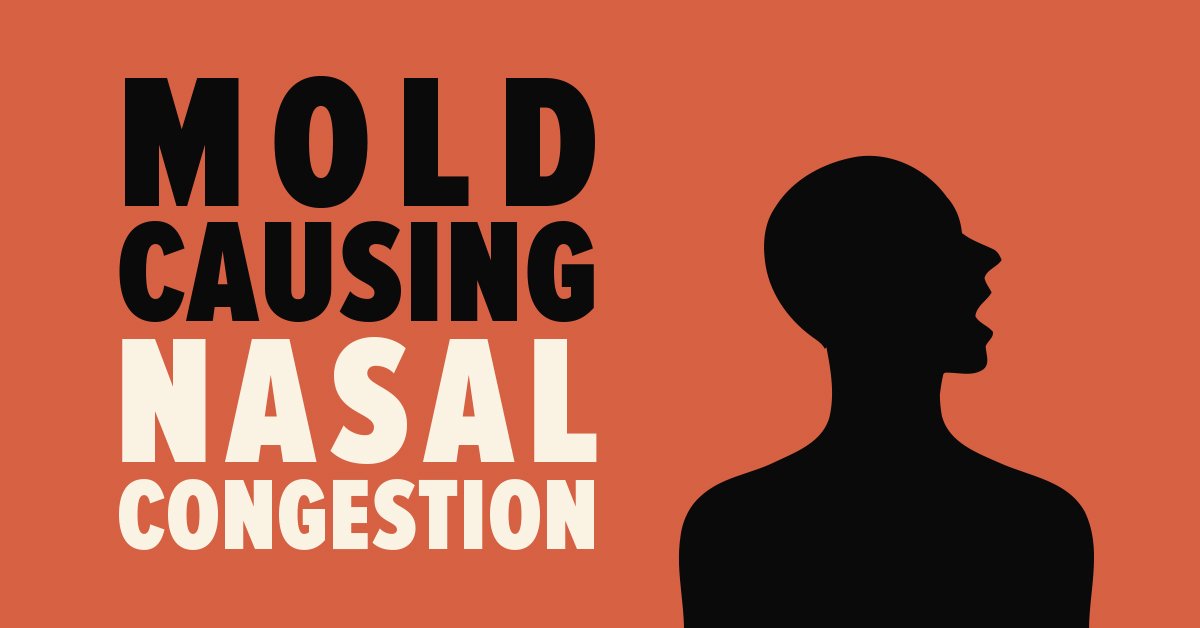
Nasal congestion, otherwise known as a stuffy nose, can happen to you regardless of whether or not you have allergies. Often, a stuffed up nose can be the result of a cold, the flu or dry air and shouldn’t be a cause for concern. However, if you notice recurring and persistent nasal congestion, particularly at night, then there may be something in your environment that’s causing your body to react this way. One of the most common reasons for a stuffy nose is mold, and if you experience this repeatedly over a long period of time, you likely have a mold problem somewhere in your house – one that should be remediated as soon as possible.
What causes nasal congestion?
- Dry air. The nose acts as a filter, preparing the air you’ve just inhaled for your lungs. At times, the process is hindered by various factors such as changes in humidity levels. When there is an inadequate amount of humidity in the air, the nasal membranes cannot produce enough mucous. The nasal passages can then dry out and suffer from irritation and swelling. Since we breathe deeper when we sleep, nasal congestion is amplified at night.
- Gravity. Sinuses are small airbags found near the bones of the face. Since gravity plays a big role in sinus drainage, you may find it very difficult to breathe through your nose if your sinuses cannot drain properly. For most people this problem gets worse at night because lying down forces the sinuses to drain down the back of your throat and cause irritation. If you lie on one side, the sinuses will drain to that side, making it difficult to breathe through that nostril
- Allergies. Allergies are another cause of night-time stuffiness. You may experience an allergic reaction to a certain type of laundry detergent or it may occur when your face comes into contact with the sheets or pillowcase you sleep on. If your allergies or breathing difficulties appear only at night, you may be allergic to the material or stuffing in your pillow.
Alternatively, you may be allergic to mold, which can grow behind your walls or in your carpets without you having any knowledge of it. Such allergens cause an influx of histamines, which often lead to a stuffy nose.
Helpful Tips for Reducing a Stuffy Nose
Nasal decongestants in the form of sprays and tablets can help relieve a stuffy nose. However, these are only temporary fixes and should not be used too often as they can become addictive. In fact, nasal sprays can actually damage your nasal passages if used in excess.
A humidifier can also help reduce stuffiness by adding moisture to the air and promoting mucous production.
If you are still having persistent stuffy nose, you should contact your doctor or another medical professional.
Can mold cause tuberculosis?
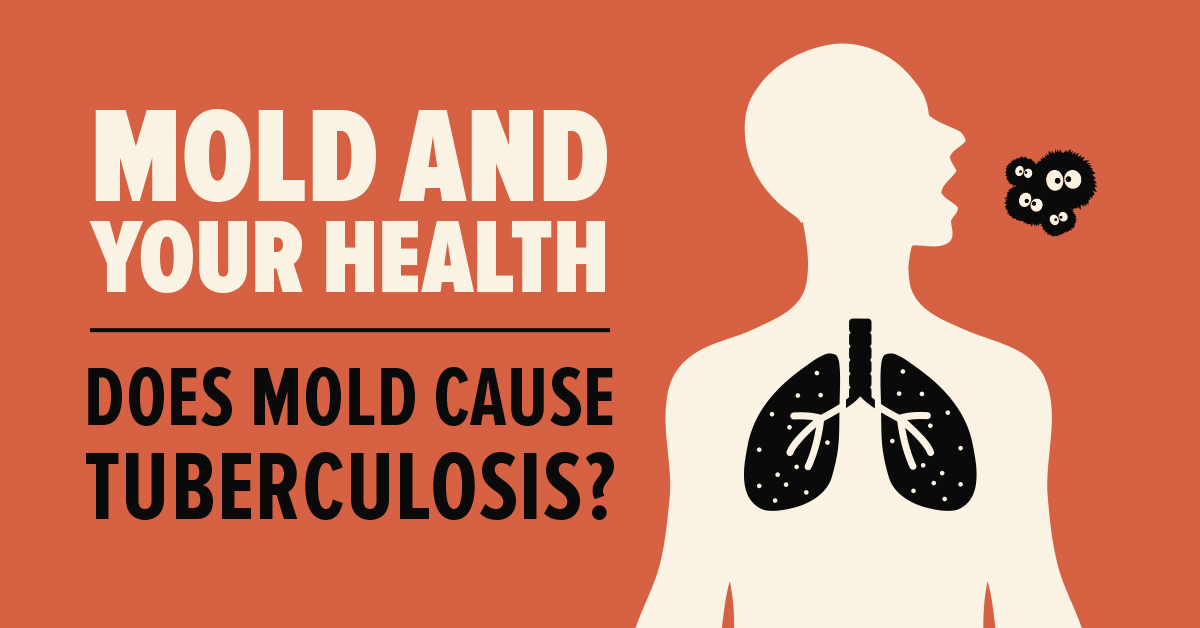
Despite recent progress and advances in medicine, tuberculosis (TB) is still not a disease of the past. In Canada alone around 1 600 new cases of tuberculosis are reported each year.
On March 24 this year, the Ontario Lung Association stated that tuberculosis remains a serious public health concern in Ontario, with one-third of all cases in 2009 occurring primarily in the Greater Toronto Area.
With that in mind, learning more about tuberculosis causes and what you can do to prevent it is the key to keep you and your loved ones safe from this disease. In fact many things we do in our daily routine can be the cause behind the weak immune system and increase risk of tuberculosis. Living with mold is definitely one of those things
How are mold exposure and tuberculosis related?
As we mentioned earlier, there are three types of mold:
- Allergenic
- Pathogenic
- Toxigenic
Each of these types can have a different impact on your health, from a simple skin rash to breathing issues and even cancer. Which symptoms you will experience (if any) depends mainly on your immune system. But, even the strongest immune systems can weaken with time if it is continuously expose to mold. Especially to Pathogenic and Toxigenic types of mold.
Tuberculosis is one of the possible mold effect you can experience and we can blame the toxic type of mold for that. Toxic mold spores often produce mycotoxins that threaten your health and make you vulnerable to diseases, like the above mentioned tuberculosis.
At Mold Busters, we often get asked whether mold can cause tuberculosis, given that it has such a profound effect on the respiratory system.
The answer?
No… at least not directly.
Although mold itself cannot cause tuberculosis, it does weaken people’s immune systems, making them more vulnerable to infections. Once your immune systems stops working full-time, you shouldn’t worry about tuberculosis only, but many other infections, mold related or not.
People who spend a substantial amount of time in areas with poor air quality are at greater risk of mold exposure and are, therefore, more susceptible to allergic, bacterial and viral infections due to weakened immune systems.
Statistics show that people in isolated or minority communities (i.e. the homeless, aboriginal people and immigrants) face higher rates of infection, likely due to poor living conditions that cause prolonged exposure to mold and poor air quality.
Mold prevention is the key to a healthy environment
The saying goes “better safe than sorry” for a reason. Many things, including mold, can be prevented from making a harmful impact on your health by following a few simple steps. Most of them can be done on a daily basis, without interrupting any other daily habits.
First of all, fresh air is your weapon in the fight against mold. It will lower the humidity level (one of the main mold causes) and dry wet surfaces such as walls, windows, curtains, etc. Try to keep your windows open as often as possible, especially in rooms such as the kitchen and bathroom. In case there are no windows, or if it’s too cold outside, your next best weapon are air vents, and even dehumidifiers if the humidity level is extremely high. If you’re in Montreal or Ottawa, you can also consider our air quality testing services.
Secondly, you have to ensure your house is clean, because dust, spoiled food, and any similar dirt are mold’s favorite food. Of course, it doesn’t mean you should be obsessed with cleaning, but things like washing the dishes every day, cleaning the excess water after the shower and vacuuming at least once a week will do the job.
And last but not least, if mold is already present in your home, there is little you can do on your own. In that case it is best to call professionals to test and confirm the mold type. Our teams in Ottawa and Montreal can help with mold inspection and testing. After which they will give you information about the mold remediation process and future prevention.
Preventing Mold and Dampness in Your Home
Dampness and mold can be prevented through proper ventilation, controlling humidity levels, and regular maintenance. Addressing water damage promptly is crucial. Mold may develop in damp areas, so it’s essential to reduce your exposure by keeping your home dry and clean. Mold and dampness can lead to health conditions if not managed properly.
If you’d like to get in touch with a professional mold inspector, contact Mold Busters. We provide all-inclusive mold testing, inspection and removal services at affordable prices. We also offer virtual inspection services for your convenience.
FAQ
1. Can mold affect your bones?
Mold exposure primarily affects the respiratory system and skin. There is limited evidence to suggest a direct effect on bones, but severe infections could potentially spread and cause broader health issues.
2. Can mold grow in your lungs?
Certain types of mold, such as Aspergillus, can grow in the lungs, especially in people with weakened immune systems or pre-existing lung conditions, leading to conditions like aspergillosis.
3. Can mold live in your body?
Mold cannot live in the body like bacteria, but mold spores can enter the body through inhalation or contact, potentially causing allergic reactions or infections in susceptible individuals.
4. Can mould give you a rash?
Yes, exposure to mold can cause skin rashes and other allergic reactions, especially in individuals with mold allergies.

Get Special Gift: Industry-Standard Mold Removal Guidelines
Download the industry-standard guidelines that Mold Busters use in their own mold removal services, including news, tips and special offers:
"*" indicates required fields
Published: October 5, 2018 Updated: July 10, 2024

Written by:
John Ward
Account Executive
Mold Busters
Fact checked by:
Michael Golubev
CEO
Mold Busters
